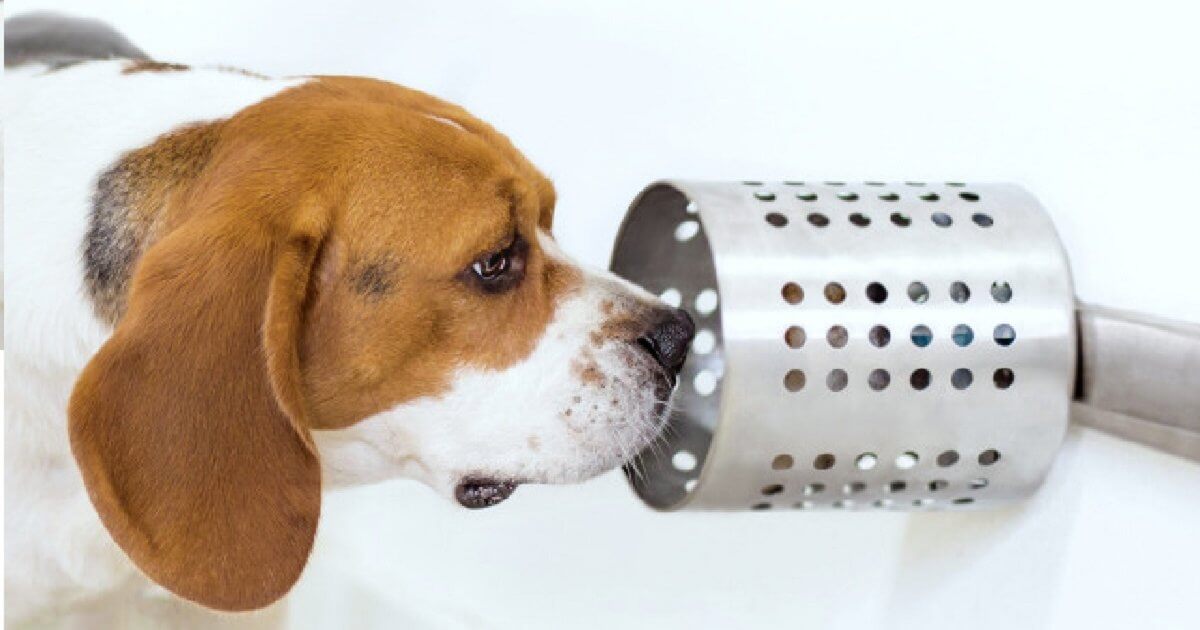People have been claiming that their pet dogs found their cancers for ages. Several years ago, for instance, a woman named Maureen Burns noticed that her Red Border Collie mix, Max, was acting strange.
"He would come up and touch my breast with his nose, and back off, so desperately unhappy, with such a sad look in his eyes," Burns told BBC.
Read More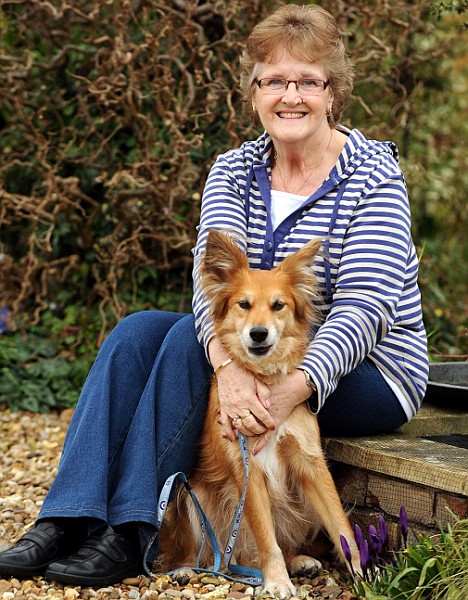
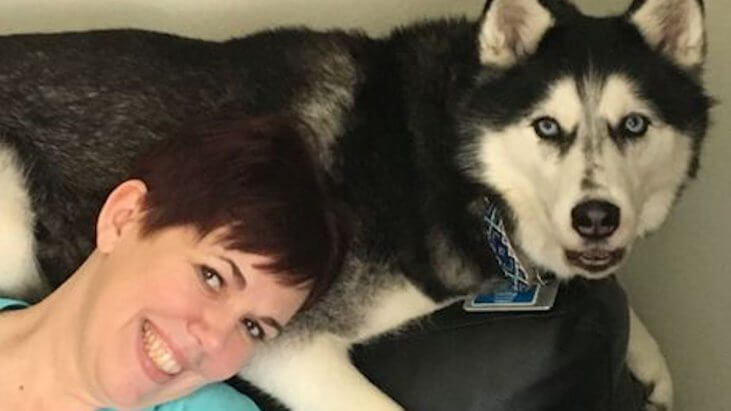
But while claims like Herfel’s have attracted a great deal of attention, the science has always been somewhat of a question mark. A study published earlier this week may change that.
So, Can Dogs Actually Smell Cancer?
According to the new study, which was published in the Journal of the American Osteopathic Association, the answer is yes, they actually can. (But with some important caveats).
The study, titled "Accuracy of Canine Scent Detection of Non-Small Cell Blood Cancer in Blood Serum," revealed that, after eight months of training, three beagles (a breed of particularly skilled smellers) were able to distinguish blood samples with lung cancer with 97 percent accuracy.
During the study, researchers brought the dogs into a room that was lined with blood taken from both healthy people (of which there were 40 samples total) and people who had been diagnosed with non-small cell lung cancer (of which there were 10 samples total). The study was double-blind, meaning that, in the moment, the researchers didn't know which samples were which, and neither did the beaglesthat is, until they started sniffing.
When the beagles approached the blood samples, which were positioned at nose level behind metal canisters, they were allotted five to 10 seconds to sniff each sample. After each sniffing period, they either sat down of they detected cancer or moved on if they detected nothing.
Overall, the three dogs were able to correctly identify the samples with 96.7 percent sensitivity. Only three times did one of the dogs determine cancer when there was none (a "false positive"), and only once did a dog miss the cancer ("false negative").
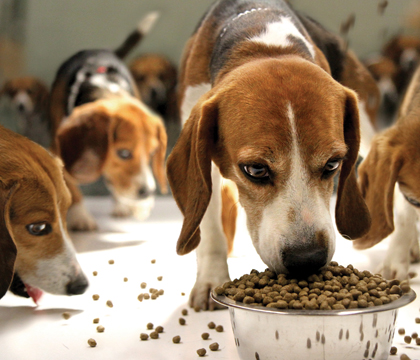
So Are Hospitals Going to Start Replacing Chest X-Rays With Beagle Noses?
Probably not. While the accuracy of the dog-sniffing is very impressive, much more research is needed to prove that dogs could actually be used as a feasible method for wide-scale cancer screening.
Keep in mind that this study used only three beaglesall of whom had gone through a strict eight-month training regimen. Though the purpose of this study was to test these dogs' capability of sniffing out cancer (rather than the general ability of all dogs to do so), researchers would have to repeat the study in many more dogs to show the results were replicable.
And it says a lot that this study was supposed to have four beagle sniffers, not three, butand this is a direct quote from the published study"One dog, Canine No. 4, was eliminated from the study because she was poorly motivated by food and did not respond well to any training method used."
Most dogs out there share that personality trait with Canine No.4: they’re motivated by food. (And unapologetically so; they're dogs, after all.)
And as Dr. Cynthia Otto, Director of the Penn Vet Working Dog Center at the University of Pennsylvania’s School of Veterinary Medicine told Popular Science in 2016, "[Dogs] have all of these influences that can throw them off, and we may not recognize it. We don't want to risk somebody's life on that."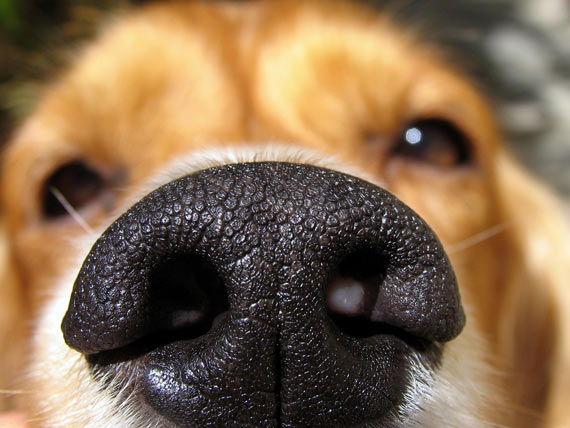
How Does the Accuracy Compare to Current Lung Cancer Screening Methods?
Usually, doctors screen for lung cancer using chest x-rays or CT scans, then examine biopsies or perform PET scans or MRIs for further information about the cancer.
Dr. Joseph Friedberg, Head of the Division of Thoracic Surgery at the University of Maryland School of Medicine, previously explained to SurvivorNet how lung cancer initially shows up as a sort of shadow on a chest x-ray, and then doctors will do a full work up to determine the cancer’s specifics and stage.
Some of these tests are better than others; the chest x-ray, for example, is responsible for 90 percent of missed lung cancers, whereas newer technologies are more accurate. But the newer technologies are also expensive.
According to the dog-sniffing study, "Current screening methods such as x-ray and computed tomographic imaging lack the sensitivity and specificity needed for effective early diagnosis. New, less-invasive, cost-effective methods with greater sensitivity and specificity are needed."
And when it comes to detecting lung canceras is the case for most cancersearlier is always better. The five-year survival rate for those diagnosed with localized non-small cell lung cancer, meaning the cancer has not spread beyond the lung, is 92 percent. That rate drops to only six percent once the cancer has metastasized to distant areas.
What's Next for the Cancer-Sniffing Dogs?
Even though it's not feasible to start using dogs for cancer screening on a wide scale, there's actually a lot that researchers can learn about cancer detection from these animals' impressive olfactory systems. According to the study, "the olfactory acuity [smelling ability] of a dog is at least 10,000 times more sensitive than that of a human." This means that dogs may be able to smell individual cancer biomarkerswhich the researchers plan on testing next.
Dr. Thomas Quinn, professor at Lake Erie College of Osteopathic Medicine and lead author on this study, told Good News Network that humans may be able to learn about these markers from the dogs, and in turn, create screening devices that employ what we learn from the dogs to offer more accurate and affordable early detection.
"Right now it appears dogs have a better natural ability to screen for cancer than our most advanced technology," Dr. Quinn told Good News Network. "Once we figure out what they know and how, we may be able to catch up."
Learn more about SurvivorNet's rigorous medical review process.

